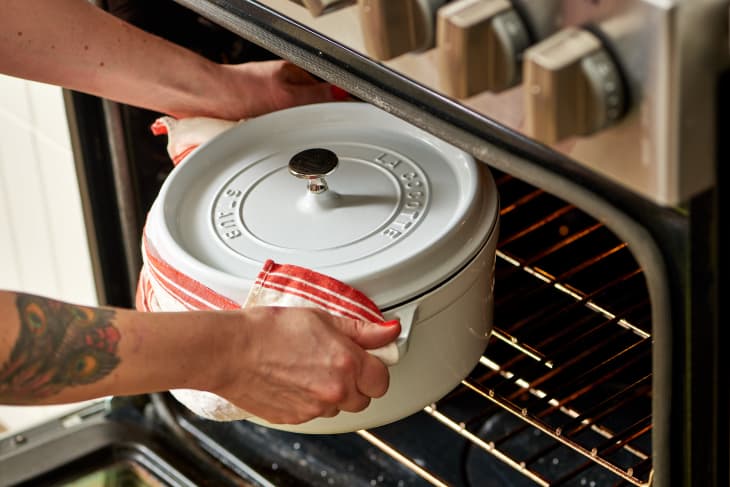Why Are Staub Dutch Ovens So Expensive — and Are They Worth It?
Staub’s Dutch ovens are beloved by home cooks, professional chefs, and plenty of Kitchn editors. The even heating and durability of the enameled cast iron combined with the cocotte’s versatility and good looks — there are few pieces of cookware that can truly do it all. But one thing no one mentions in their odes to Staub? The price.
At more than $300 for a classic 4-quart Dutch oven at full retail price, Staub isn’t exactly cheap. So is it really worth dropping a few hundred bucks on a single pot? We get this question a lot, so we’re taking a deep dive into exactly why a Staub Dutch oven costs so much.
Why Is Staub So Expensive?
Handmade in northeastern France, each Staub Dutch oven undergoes a lengthy, multi-step process with a variety of quality-control checks along the way. (Fun fact: Le Creuset’s cast iron Dutch ovens are also made in France!) From start to finish, each Staub Dutch oven takes about a week to make and is handled by more than 20 different people.
Staub spends a lot of time ensuring that the pot’s walls are uniform in thickness. If not, the pots run the risk of popping or cracking in the oven. “The biggest difference between more expensive brands and cheaper brands is the consistency of the wall thickness,” says Joanna Rosenberg, chief marketing officer for Zwilling J.A. Henckels, the parent company of Staub.
She explains that Staub has invested millions of dollars into its machinery to ensure that its cookware’s walls and surfaces are consistent, which ultimately produces even enamel lines, preventing chipping and peeling later on, even decades later. It’s this hyper-attention to the combination of craftsmanship, engineering, and manufacturing that, not surprisingly, drives up the retail price.
The pots’ good looks are also worth talking about when factoring in the price: “[The] enameling process is unlike any other brand. The rich colors come from three layers of glass colored with minerals. The extra layers also make it extremely durable and scratch-resistant,” says Meghan Dwyer, senior buyer of cookware at Williams Sonoma.
Is Staub Worth It?
Because we’ve been to the Staub factory in France to see, first-hand, how each pot is made and we’ve tested many Staub Dutch ovens, we can personally vouch that the cost of a cocotte is definitely worth it. Not only are they gorgeous, durable, well-made pieces, but they’re also loaded with useful features.
For example, Staub Dutch ovens have a black matte enameled interior that won’t stain, is super effective at browning meat evenly, and it can even build up a nonstick “seasoning” over time — Le Creuset’s white enamel interior has its own merits but our editors have experienced less browning.
The knob on the lid is metal (instead of plastic), which means it can withstand higher temperatures in the oven. And the inside of the lid has “self-basting” spikes that send condensation dripping back down into the center of the pot to help keep food tender and moist. Plus, there’s an excellent lifetime warranty program, should any issues arise.
What We Recommend: Don’t Pay Full Price
As much as we think the cost of Staub’s cocottes are justified, it doesn’t mean we actually want to pay the full price tag, so be on the lookout for deals. Staub has a major sale every spring and fall, as well as during Black Friday and Cyber Monday where we’ve seen the best-selling 4-quart cocotte go on sale for as little as $99 (it’s usually more than $300). New e-mail subscribers can also score a 10% or 15% percent welcome discount, which you can stack on top of the sale for even more savings.
While the sales are good and the discounts are steep, the inventory is sometimes limited in colors and pieces go super quickly. There’s no reason to pay full retail price if you can wait — just don’t wait too long.
Your turn: Are you thinking about buying a Staub Cocotte, or are you already a proud owner? Share with us in the comments!
